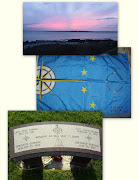The Duke and his band had slipped in popularity with the rise of bebop, the jazz style which was developed by Charlie Parker, Dizzy Gillespie, and Thelonious Monk, among others. Many big bands had folded completely by the mid-1950s, but Duke had kept his band working, occasionally doing shows in ice-skating rinks to stay busy. The Duke Ellington Orchestra had done some European tours during the early 1950s, and Duke was chiefly supporting the band himself through royalties earned on his popular compositions of the 1920s to 1940s.
Duke and his orchestra arrived to play at the Newport Jazz Festival at a time when jazz festivals were a fairly new innovation. The crowds in those days were quite sedate compared to the typical concert-going crowd of today. The first few numbers, including "Black and Tan Fantasy" and "Tea for Two" were played without a few of the band's members as they were unable to be found at the start of the show.
After some performances by other players at the festival, the remainder of the band was located and the real performance began. Duke led off with "Take the 'A' Train", followed by a new composition of Duke and Billy Strayhorn's which was a three-part suite. The first movement was entitled "Festival Junction". The second was called "Blues to Be There" and the final movement was named "Newport Up". This suite was intended to be the showstopper, but the reception was not as enthusiastic as was hoped.
Following the Newport Suite, Duke called for Harry Carney's baritone saxophone performance of "Sophisticated Lady". Then the orchestra played "Day In, Day Out". Following this, Duke announced that they were pulling out "some of our 1938 vintage"---a pair of blues, "Diminuendo in Blue" and "Crescendo in Blue," joined by an improvised interval, which Duke announced would be played by tenor saxophonist Paul Gonsalves.
Ellington had been experimenting with the reworking for several years before the Newport performance; a release of one of his Carnegie Hall concerts of the 1940s presented the two old blues joined by a wordless vocal passage, "Transbluecency," but in time he chose to join the pair by a saxophone solo, handing it to Gonsalves, experimenting with it in shorter performances before the Newport show, where Ellington is believed to have told Gonsalves to blow as long as he felt like blowing when the solo slot came. It came after two choruses of an Ellington piano break at what was formerly the conclusion of "Diminuendo in Blue."
As performed at Newport, the experiment ended up revamping the Ellington reputation and fortune for the rest of Ellington's life.
Subscribe to:
Post Comments (Atom)
The Best Location in Town

F A I R S T R E E T N E W P O R T
MOON GATE at Chateau Sur Mer
A Simple Gateway..enter your secret garden ?
A Special Sunset
the old Christie's....Gone



No comments:
Post a Comment